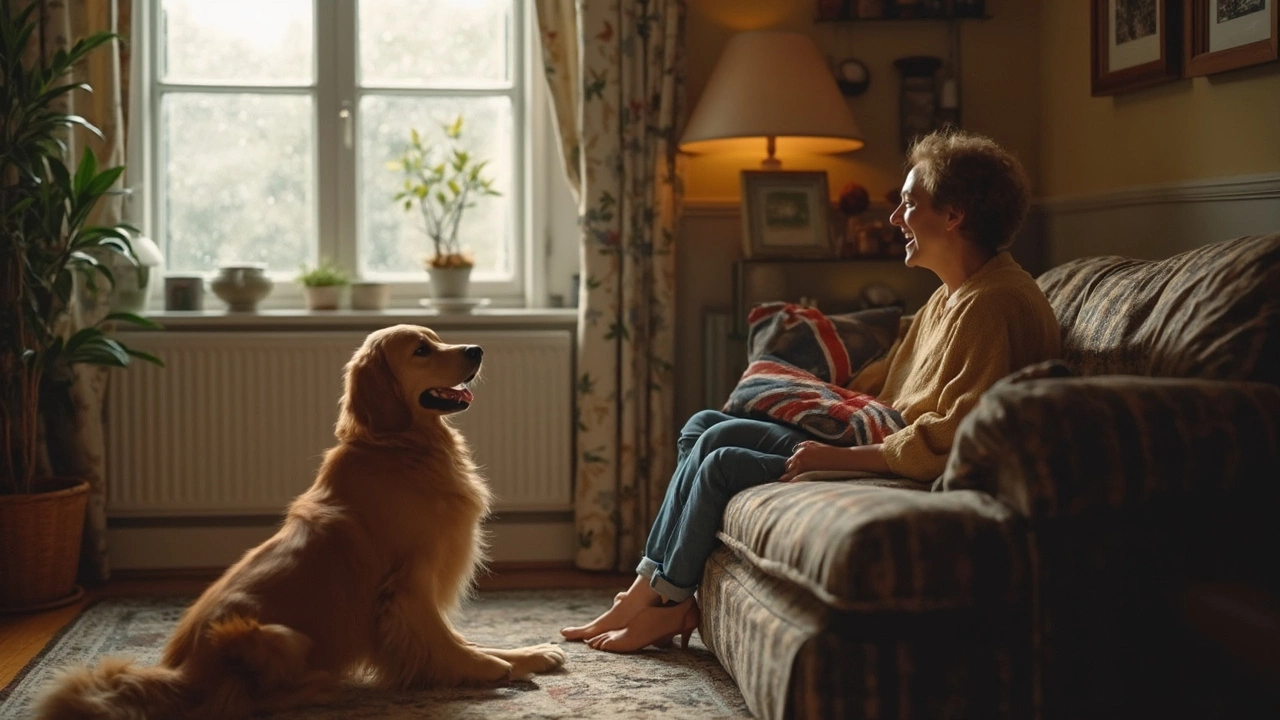Dog Stretching: Easy Moves for a Flexible, Happy Pup
If your dog seems stiff after a long walk or wakes up with a sore back, a few simple stretches can make a big difference. Stretching isn’t just for athletes – it helps dogs keep their joints lubricated, muscles limber, and prevents tiny injuries from turning into big problems. The best part? You can do it right at home, no fancy equipment needed.
Before you start, check that your dog is relaxed and not in pain. A good warm‑up – like a short walk or a gentle play session – gets the blood flowing and makes the muscles more pliable. Keep treats handy; they’re perfect for rewarding calm behavior and keeping your pup focused.
Simple Stretches to Try
Neck Tilt: While your dog is sitting, hold a treat near its nose and slowly move it toward its shoulder. Your dog will naturally turn its head and stretch the neck. Hold for a couple of seconds, then switch sides. Do this three times each side.
Front Leg Reach: With your dog standing, encourage it to step forward with one front paw onto a low step or a rolled towel. Gently press the heel down while you support the opposite leg, creating a gentle stretch in the chest and shoulders. Hold for five seconds, then release. Repeat on the other side.
Back Arch (The “Cat‑Cow” Move): Place your dog on all fours. Gently push down on the hips while lifting the head, creating an arch. Then reverse – let the belly drop while you gently lower the head. This mimics the cat stretch and helps the spine stay supple. Perform five slow cycles.
Hamstring Stretch: Have your dog lie on its side. Gently lift the hind leg, keeping the knee slightly bent, and hold for a few seconds. This eases tension in the back of the thigh. Do two reps per leg.
When and How Often to Stretch
Morning and evening are ideal times, especially after a brief walk. Aim for 5‑10 minutes of stretching two to three times a week. If your dog loves a specific activity – like playing fetch or going for hikes – add a quick stretch routine before and after to keep muscles ready and recover faster.
Watch your dog’s body language. A relaxed tail, soft eyes, and willingness to stay in the pose mean you’re on the right track. If you notice whining, stiffening, or trying to get away, stop immediately and try again later. Always respect your pet’s comfort level.
Consistency beats intensity. Short, regular sessions build mobility without stressing the joints. Over time you’ll notice smoother movements, fewer groans after play, and a generally more upbeat demeanor.
Got a senior dog or one with arthritis? Stick to the gentlest stretches and keep sessions under five minutes. Consult your vet if you’re unsure about any movement; they can suggest modifications tailored to your pup’s condition.
Incorporating stretching into your routine is a small habit that pays off in big ways. Your dog will thank you with more wiggles, fewer limps, and a zest for life that’s hard to beat. Grab a treat, find a comfy spot, and start stretching today – your furry friend will feel the difference.
Posted By Bryndle Redding On 21 May 2025 Comments (0)
Why Do Dogs Stretch When They See You? The Surprising Reason Behind This Adorable Habit
That big stretch your dog does when you walk in the door isn’t just about working out kinks – it’s their way of saying hello and showing affection. This article dives into why dogs stretch when they spot you and what it can tell you about their mood, health, and your bond. Expect practical tips for encouraging healthy stretching and making sure your dog feels comfy, especially when it comes to their bed. Learn how reading your dog’s body language makes both of you happier. Find out what to do if your dog’s stretching seems out of the ordinary.
READ MORE